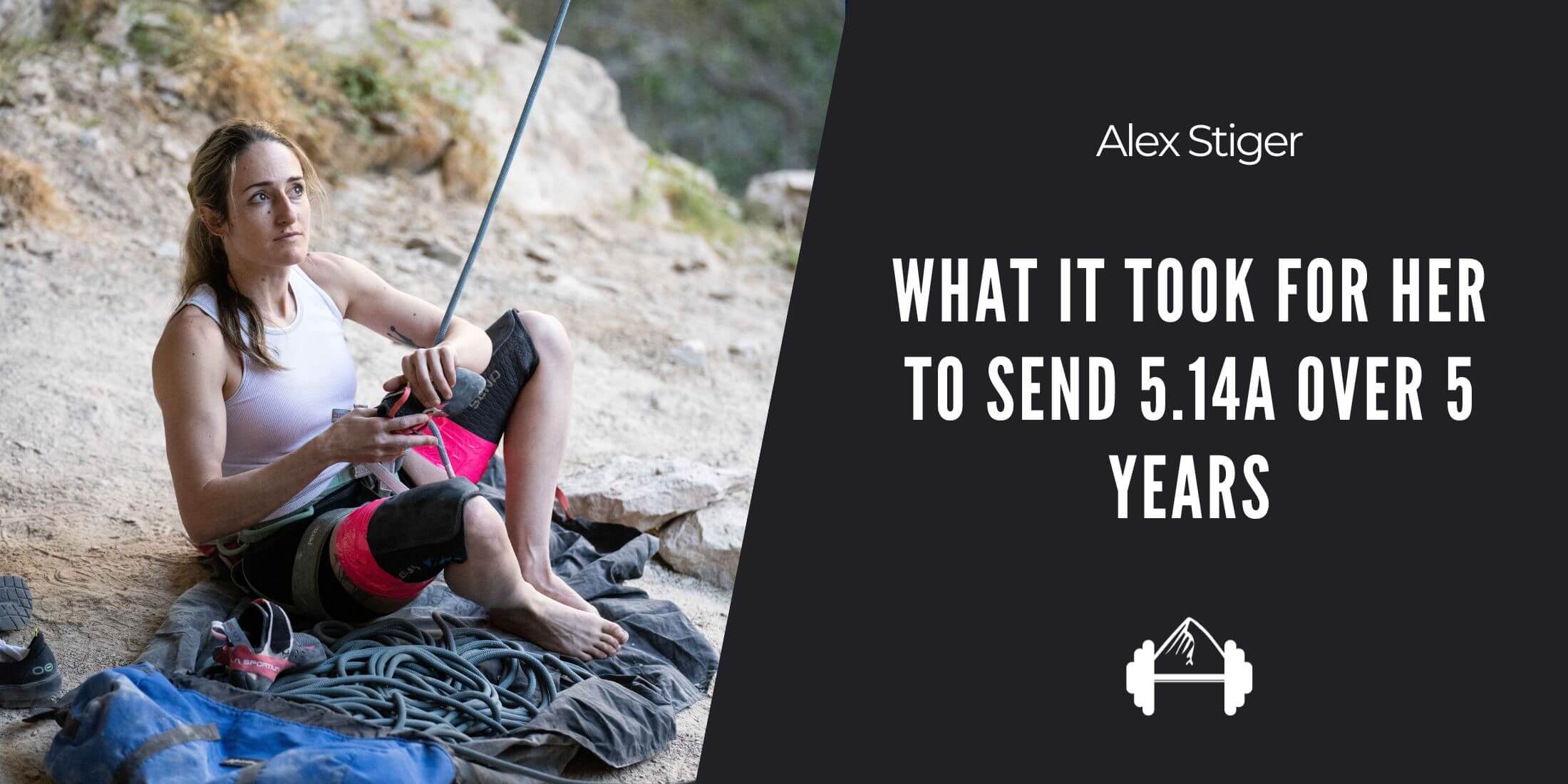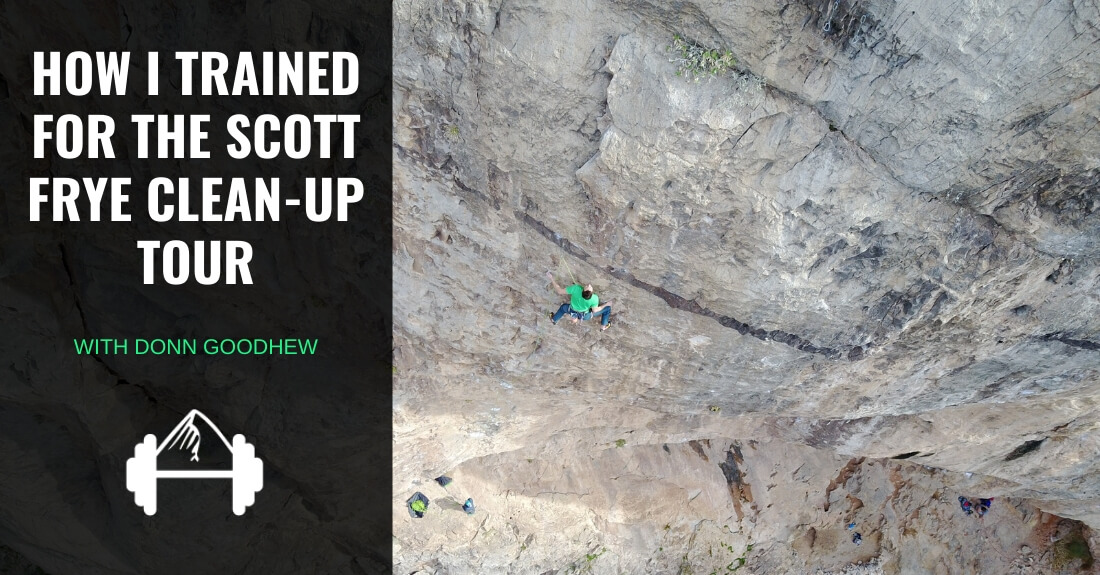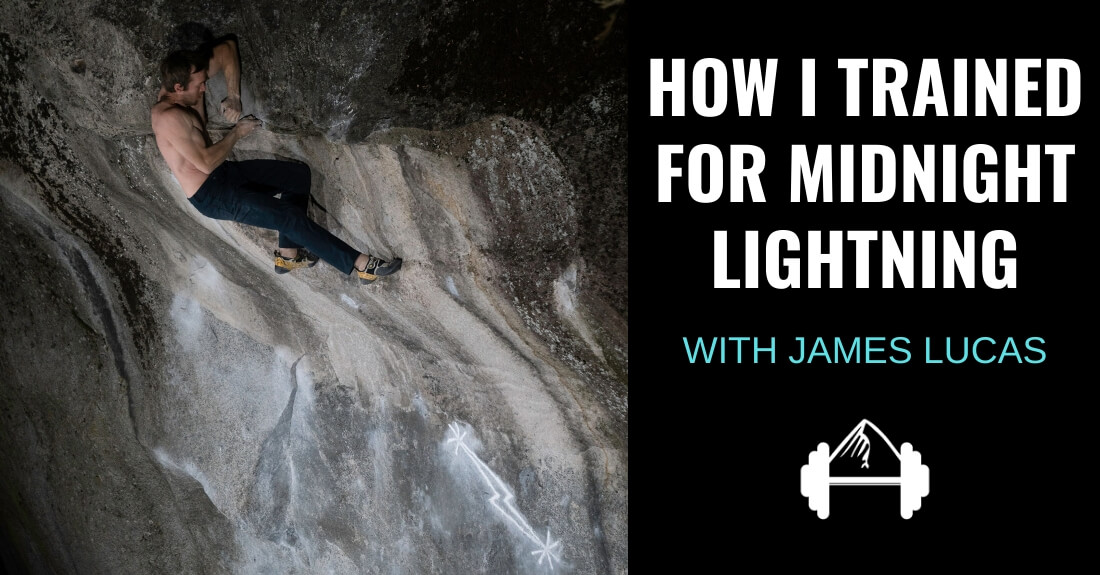With training, it’s easy to get obsessed with the idea of perfect. We all want to know what the perfect hangboard protocol is, what the perfect periodization scheme is, or what perfect set of supplemental exercises will let us reach our goals. Essentially, we want the perfect training program. Ask any coach, however, what this “perfect” training program is and you’ll get the same answer: “There isn’t one.”
That can be a frustrating answer for lots of people to hear, but it’s the truth. The reality is there is no master training program that’s going to work for everyone and get everyone to their goals. All of us are unique athletes. We have our own individual goals, strengths and weaknesses, life/professional constraints, and training histories. Rather than looking for the “perfect” program, we should actually be looking for the right program for us individually.
Today’s installment of the TrainingBeta How I Trained For Series features longtime climber Leif Gasch and underscores just how important it is to have a training program that takes into account the full picture. Leif is a full-time electrician and has been on the TrainingBeta Podcast before talking about how he tried a lot of different training programs over the years. Some worked. Some didn’t, but Leif learned from all of them along the way and was able to design a program for himself that allowed him to send his first 5.14b, Less Than Zero at the Poptire Cave in Utah.
We’ll let Leif take it from here, but as always we want to remind you that while you may find some of the specifics about Leif’s program helpful, there’s a deeper lesson to be learned here about the process of continually improving as a climber. Leif achieved his goal not because he did more training than anyone else. Instead, because he didn’t let his successes and failures define him as a climber, he was able to learn along the way and find the right balance for himself. By respecting these limits and working hard within them Leif found the right formula for him. That’s something we can all learn from.
– Matt Pincus
How I Trained For Less Than Zero 5.14b
Training for climbing has always been a curious and sometimes bewildering process to me. I used to think that training meant hours and hours of vigorous weight training spent in highly specialized facilities, logging and graphing data, and drinking wheatgrass infused protein shakes from expensive blender bottles. What I’ve learned is that training for climbing takes on a multitude of forms, none of which is superior to another necessarily, just varied and different because each climber and their lifestyle is also varied and different from each other.
Initial Training
Six years ago I felt like I had reached a plateau in my redpointing ability and I knew I needed to start focused climbing exercises to overcome my current threshold. Being a full-time electrician, though, I knew my time was valuable and I could no longer just climb on the weekends and expect new results. I wanted to start training, but there was so much information out there it was hard to know where to begin.
My friend Jonathan Siegrist had begun a program with Mike and Mark Anderson and was enjoying it, so I figured since he was a better climber than me he must “know the path.” So I bought The Rock Climber’s Training Manual and went to work. Their book laid out really great information on a number of different exercises, the reasoning behind those exercises, and it came with easy-to-use charts and logs. It really was an ideal program to start with.
At the end of the cycle, though, I was left feeling like I hadn’t achieved what I wanted. In hindsight, I don’t think any program would have achieved that for me. At this point, my reach was exceeding my grasp. When I started the program, I was missing fundamental building blocks of training. I needed to start with an understanding of strength, power, and movement-specific skills – steps I was inadvertently trying to skip. By not having those key pieces of information, I wasn’t able to fully appreciate what I’d accomplished during the training. I concluded the cycle feeling slightly disappointed, like I should see more specific “on the rock” results despite having made measurable gains and developed a greater understanding of climbing training that would be the basis of my future training cycles.

The author putting in the time to develop finger strength on the hangboard. | Photo: Brian Martin
Exploring Different Training Options
Learning from my initial foray into more structured training, I narrowed my focus a bit and sought out local Salt Lake City training guru Steve Maisch for my next program. I had chosen a specific route to project called Terrordome. Located at the Poptire Cave and checking in at 5.14a, the route was notably harder than my previous redpoint grades. Steve was familiar with the route and designed a program for me that was much more specialized.
The program featured unique exercises like compression front levers designed for the route’s steep angle and powerful movements. It also incorporated more traditional strength exercises like Turkish Get-Ups and weighted pull-ups that were key in developing a better understanding of whole-body fitness and where we generate power from. Many of the exercises Maisch introduced me to I now consider key fundamentals for any climber wanting to explore climbing training and maintaining a balanced physique.
Using a traditional linear style program, we scheduled the cycle to conclude during what we considered an “optimal redpointing window” during a few weeks in October. I made solid gains on the route and for the first time was able to see and feel the tangible results of my training efforts.
Despite my efforts, I failed to redpoint. A combination of factors contributed, an unplanned family vacation, a slight decrease in my explosive power, and weather constraints left me lacking the necessary fitness to finish the project in the time window. I learned a tremendous amount about power with Steve and also some valuable insights into a few areas of my climbing style that really needed a lot of work.
Setbacks and Sends
The following winter/spring I began to develop some serious pain in my shoulder. I sought help from another Salt Lake City local Esther Smith from Grassroots Physical Therapy and we quickly discovered I was suffering from a full-blown case of biceps tendonitis. After a few months of therapy, she encouraged me to begin training and conditioning with a professional training group she’d worked with to strengthen and balance out some of my over-compensated climbing physique. It just so happened my good friend Dan Mirsky had recently signed on as a coach with the training group and we set out together on my most ambitious training plan to date.
I still had the same goal, but we approached it from a different perspective. We followed another linear style program that lasted about five months. We measured everything and I began to notice gains within the first month. My hangboarding went through the roof, my shoulder held up to the rigors and was no longer an issue, and I can easily say it’s the best shape I’ve ever been in my life. I did notice struggles in my motivation about 2/3 of the way through the program, though, and I spoke with Dan and we scaled back on some of the intensity. Yet as I continued training, I would hit walls of complete exhaustion – both in body and mind. My numbers leveled off and I pulled the plug on the program just before the climbing season began.
I spent the next month just climbing on my project and at the end of the month, fought my way to the chains for a benchmark send. That program whipped me into the best shape I’ve ever been in; the cost, however, wasn’t sustainable in the long term with my current job.

Leif Gash on Bulletproof Monk 5.13c in the China Cave, Logan Canyon, UT. | Photo: Lindsay Gasch
My training with Dan was the first program that “worked.” That is, if the measuring metric was clipping chains. I undeniably became stronger and a better athlete through the process, but I did so at the cost of tremendous fatigue and more effort than I knew was sustainable in the future, the latter being paramount. I had already been eying an even harder route, and I knew I would have to maintain specificity in my training but with more emphasis on rest and efficient sessions.
At that point, I had cultivated a great friendship with Kris Hampton from Power Company Climbing and asked him to help me reach my new goal, Less Than Zero, a 5.14b at the Poptire Cave. During this training cycle, Kris re-defined what I thought a workout should look like and had me refocus on some very fundamental basics, citing Olympic athletes from other sports as an example. These high-level athletes spend years honing individual and very basic movements to perfection. We spent a lot of time looking at basic movement and I began to have a serious appreciation for body awareness and core strength. The workouts were less intense and they were great for the steep nature of the climbing I wanted to tackle.
During this cycle, my job responsibilities picked up dramatically and I struggled to balance the daily distribution of energy between heavy work days and training sessions at the gym. The program wrapped up and I had my first campaign on the new project. I made steady gains with each try but I felt like they were in inches, not the feet I had hoped for, and, at the end of two months of climbing on the route, I was climbing better than I ever had, yet I hadn’t tasted victory.
Finding My Formula
After a month of rest and a sustained increase in career workload, I sat down and looked at a rather large stack of training notes from all my experiences and reflected. I realized I had a ton of information in front of me and I felt like I finally knew enough about myself to make solid decisions about what my physical limits were.
Coincidentally, I had just purchased Steve Bechtel’s book Logical Progression and was captivated by the idea of a non-linear program that I could adapt to my ever-changing work schedule. I sat down and drew up three very basic workouts designed to target each of the energy systems outlined in the book. I only included exercises that were specific to the steep style of climbing on my project and that I had a history of responding well to. I designed each workout to fall within very specific time constraints to minimize wasted time at the gym.
I also went out on a limb and eschewed traditional style periodization and scheduling. Instead, I opted to work out only when I felt ready and would only move on to the next workout after an appropriate rest. This meant I wouldn’t train on Tuesdays and Thursdays like I had in the past. I might train strength on Tuesday but felt I needed two days off due to the workout and a couple of bigger days at work. Then, I’d train power on Friday, and maybe after just one day off, I’d feel ready to train again so I’d move onto an endurance workout. After my endurance workout, I would cycle back and start strength again, regardless of what day of the week it was. I never took more than three days off and sometimes it was just one day between workouts. I let my body be the guide and I put just as much emphasis on my rest days as I did my training days. The end result was stepping up to each workout feeling fresh, ready to train, and most importantly willing to commit 100% of my energy to that workout.
Long story short, the quality of my workouts improved tremendously. I followed this method for just over two months not knowing if it would be a blessing or a curse come game time. I’ve included a basic template of some of my workout protocol during this process. I would like to add that this program was extremely specific to me and my project and is probably not the best format for much other than the upside down pod-wrestling style of Less Than Zero.

Leif Gasch on Less Than Zero 5.14b. | Photo: Alton Richardson | @agrphoto
Non-Linear Training Program Sessions
Strength Workout: Weights were progressed as my strength levels improved over the course of the cycle, but I’ve included some weights as reference:
- Pull-ups: 3 sets with decreasing reps and increasing weight added – i.e. 5 reps with 25lbs added, 4 reps with 35lbs added, 3 reps with 45lbs added.
- Deadlifts: 5 reps at 250lbs.
- Heavy Rows: 8-10 reps at 75lbs.
- Hanging Straight Leg Raises: 5 reps
- Turkish Get Ups: 2 per side with 45lbs
- Superman Planks: 3 x 1-minute per side
- Goblet Squats: 8 reps at 70lbs
- Russian Twists: 10 per side with 45lbs
- GHD Raises: 5 reps at bodyweight
Power Workout: This session consisted of the following skill drills and bouldering practice:
- Slow Movement Drill 2x
- Body Tension Drill 2x
- Max Campus Ladders 2x
- Hollowbody Hold 2 x 45 seconds
- Final warmup: Ten problems V0-V5 with no rest
- Minimum 5 problems at 70-80% of max v-grade.
- Project Bouldering: 30-40 minutes
Endurance Workout: Indoor sport climbing session:
- 2 warmup routes
- Route Pyramid: 12a, 12b, 12c, 12d, 12c, 12b, 12a, 12b, 12a, 12a.
- I wouldn’t send all of the routes, but I kept the number of routes and the grades the same over the course of the entire training cycle.

Leif Gasch warming up on High Flames Drifter 5.12c at the VRG | Photo: Matt Pincus | @mpincus87
The Results
The season arrived and my first weekend on Less Than Zero I matched my high point from the previous fall. Right then I knew I had stumbled onto something great.
In all, I tried the route eight days that spring and I sent on my third try, second day on, after a nice little crag nap. The program I designed was the perfect combination of the all tools I needed and none of the fillers I didn’t. It also opened my eyes to understanding that to truly train for climbing you have to take into account every factor of life, they’re all important and play some role whether you deem them significant or trivial.
Over the tenure of my training history, I’ve always maintained an open mind and absorbed as much of the experience as possible. Embracing each training cycle in this way has exposed me to really great takeaways, both positive and negative. I think it’s also important to point out that failure inevitably comes with the territory when adapting the body to new rigors and stresses. There will always be elements of training that yield positive results and we strive to replicate this process as often as possible. That said, there will always be moments of failure and components that don’t yield those positive results. It’s important to remember to learn from those experiences and keep pushing forward.
I would like to thank each of the trainers and program designers I’ve worked with that have helped me rise to the level I’m at now. Without their knowledge and passion, I would never have tasted the success I have. Climbing is an ever-evolving process and we build and grow on the foundations forged ahead of us. Thanks again to Neely and the TrainingBeta crew for this opportunity to share some experience.
About the Author

Leif Gasch lives in Salt Lake City with his wife Lindsay and works as a full-time electrician. He started climbing in 1994 with his father in Wyoming and he cut his teeth on the limestone of Lander for much of his youth. Having traveled extensively in the USA he enjoys all types of climbing and rock, though he’s a self-professed sport climber these days. While future travel plans are always on the horizon, he continues to find the elusive “balance” between work and play.
Cover Photo: Leif Gasch on his VRG project Dude 5.13d | photo courtesy of Robert Otto | @robertotto2000





It looks like there is no hangboarding in your program, and I was curious about why you chose to leave that out.
Proud to know and love you!! Connie Keller